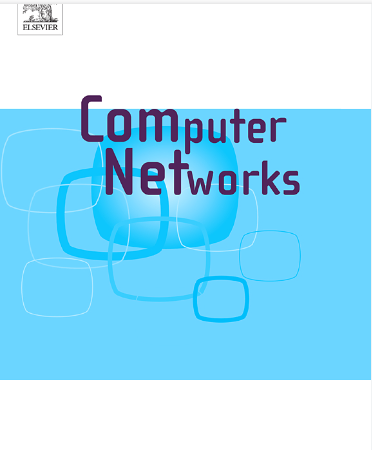基于自适应深度学习的用户身份验证与数字签名的最佳密钥辅助加密,用于b区块链中安全的移动边缘计算数据存储
IF 4.4
2区 计算机科学
Q1 COMPUTER SCIENCE, HARDWARE & ARCHITECTURE
引用次数: 0
摘要
物联网(IoT)设备的发展推动了对可靠高效的任务计算系统的需求。移动边缘计算(MEC)正在增长,并已成为近似和依赖延迟作业的可行工具。边缘技术非常适合需要最小延迟、位置理解和大量互连的物联网应用。它当然弥补了云在电力和即时分析领域的一些不足。然而,确保应用程序上下文中数据的安全性仍然是一个重要问题。此外,对于包含分散和多样化设备的任何计算系统来说,隐私都是一个问题。区块链代表了一种相对较新的技术,它作为确保完整性、安全性、一致性和真实性的有趣选择而出现。然而,区块链本身无法确保信息的足够隐私。因此,为了防止基于物联网的数据隐私,区块链技术应运而生。数据是从物联网设备收集的。验证用户身份,并将数据存储在网络中。采用自适应深度马尔可夫随机场(ADMRF)模型进行验证。ADMRF中的参数通过改进的平衡优化(IEO)进行调谐。一旦验证了用户身份验证,就使用基于属性的加密(ABE)技术对数据进行加密。加密密钥是在IEO的帮助下生成的。然后,经过加密的数据由授权用户进行数字签名,然后存储在区块链中。通过与其他现有模型的比较来衡量模型的安全性。本文章由计算机程序翻译,如有差异,请以英文原文为准。
An adaptive deep learning-based user authentication with digitally signed optimal key-aided encryption for secured mobile edge computing data storage in blockchain
The development of Internet of Things (IoT) gadgets boosted the need for a task computing system that is reliable and efficient. Mobile Edge Computing (MEC) is growing and has become a viable tool for proximate and dependent-on latency jobs. Edge technology is well suited to IoT applications that demand minimal latency, position understanding, and large numbers of interconnections. It certainly compensates for some deficiencies in the cloud in the fields of electrical power and immediate analysis. However, ensuring the security of data in an application context remains a significant concern. Furthermore, privacy is an issue for any computing system that contains dispersed and diverse equipment. Blockchain represents a relatively new technology that emerged as an intriguing option for ensuring integrity, safety, uniformity, and authenticity. Yet, blockchain is unable to ensure adequate privacy for information on its own. So, to prevent the privacy of IoT-based data blockchain technology was developed. The data are collected from the IoT devices. The user authentication is verified, and the data are stored in the network. Also, the Adaptive Deep Markov Random Field (ADMRF) model was used for getting the verified data. The parameters in the ADMRF are tuned with the Help of the Improved Equilibrium Optimized (IEO). Once the user authentication is verified, then the data are encrypted with the help of the Attribute-Based Encryption (ABE) technique. The encryption keys are optimally generated with the help of the IEO. The encrypted data are then digitally signed by the authorized user, and then it is stored in the blockchain. The security of the model is measured by comparing it with other existing models.
求助全文
通过发布文献求助,成功后即可免费获取论文全文。
去求助
来源期刊

Computer Networks
工程技术-电信学
CiteScore
10.80
自引率
3.60%
发文量
434
审稿时长
8.6 months
期刊介绍:
Computer Networks is an international, archival journal providing a publication vehicle for complete coverage of all topics of interest to those involved in the computer communications networking area. The audience includes researchers, managers and operators of networks as well as designers and implementors. The Editorial Board will consider any material for publication that is of interest to those groups.
 求助内容:
求助内容: 应助结果提醒方式:
应助结果提醒方式:


